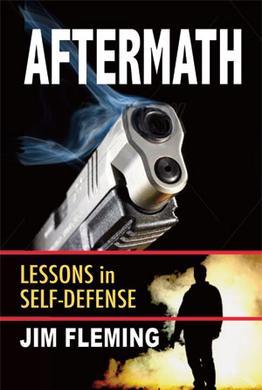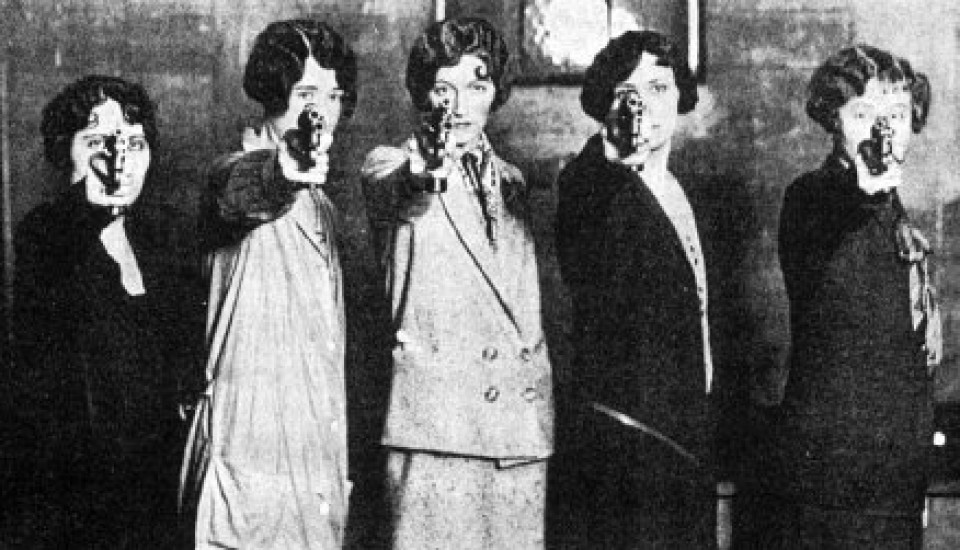Things you need to know about using your gun for self defense.
This is an article from The Armed Citizens Defense Network eJournal:
Attorney’s Book Outlines Aftermath Issues
An Interview with James Fleming
Interview by Gila Hayes
When armed citizens get into discussions about using force in self defense, it often exposes the depth of misunderstanding common to laypersons that cannot help but base expectations on popular culture and entertainment. Predictably, unpleasant revelations await one sucked into the maelstrom of the criminal justice system. Understanding how attorneys and the legal system work goes far to prevent disastrous surprises.

We recently asked Network Advisory Board member James B. Fleming, a trial attorney of more than 30 years experience, and a former law enforcement investigator, to identify common misunderstandings. What, we asked, are key problem areas? His answers are detailed and full of colorful illustrations, so we switch now to Q & A format to retain the flavor of the interview.
eJournal: Jim, I’m aware that you’ve just finished writing a book, Aftermath: Lessons in Self-Defense. That makes it a good time to ask you about what armed citizens should expect to encounter in the criminal justice system after using force in self defense. You’ve told me repeatedly that a number of nasty surprises await the unprepared, so perhaps today we could demystify the top three or four. Where should we start?
Fleming: First, the idea that you are going to have a conversation with the police and that everything is going to be OK could not be more inaccurate.
eJournal: OK, so to start with interaction with police. We’re programmed to expect the Miranda warning but also to expect responding officers to ask what happened. How do those two realities work together and what are the pitfalls?
Fleming: Well, suppose the client has said, “I will not answer any questions or give any statements until my attorney is present.” Particularly after the last two years of Supreme Court decisions, you have to SAY it: it has to be verbal. If you don’t, then anything you say, any facial expression, any body language, any gesture can be used against you.
In Salinas v. Kansas, the cops investigating a drive by shooting where two people were killed are confronted with a guy that is not saying anything to them. One cop finally says something to the effect, “Have you asked God to forgive you for gunning down those two people?” See, the guy hasn’t said a word to them, but he is looking at the cop and all of a sudden a single tear trickles down his cheek. The cop gets to testify to that in front of the jury; the jury convicts the guy in 17 minutes. End of story.
Of course, everybody went crazy and said, “You can’t do that! What about Miranda?” Nobody–the courts, the cops, the prosecutors–has liked Miranda since Miranda was handed down because so very few people have actually spent time sitting down and looking at what Miranda really does say and what Miranda doesn’t say, and deciding, “OK, then this is how we need to operate within that body of law.”
eJournal: In a nutshell, what does Miranda really say?
Fleming: If police have you in custody, before they question you, they have to read you your rights. If you say, “I’m not going to give you a statement until my attorney is present,” they might continue to question you, but even if they do, after that, nothing that you say [in response to questioning] can be used against you. But, suppose our fellow or lady gives a clear and unequivocal statement, “I will not answer any questions or provide any statements until my attorney is present.” So the cops say, “OK, will you please go sit down over there?” Two cops are standing in the middle of the room, one of them looks at the other and says, “I don’t know about you, but self defense? This is bullshit. This guy got executed.” They are not talking to her, but they make sure she hears it.
She comes up out of the chair, yelling, “That’s not true!” Well, what is she doing? She is waiving that clear and unequivocal statement of reliance upon her right to remain silent and the next thing you know, she has got diarrhea of the mouth and even if she does her very best to be perfectly honest–because of the issues that she is dealing with, what she is telling them could be miles from the truth and she wouldn’t even know it.
eJournal: Isn’t it commonly accepted that police who are involved in a shooting should insist on a 48- to 72-hour delay after the incident before making a formal statement to investigators?
Fleming: Well, the 72 hours is coming right from the International Association of Chiefs of Police. I am emphasizing more than I ever have before, in the immediate aftermath of the incident, you may think you are in a good position to talk to the police, but you are not. In writing the chapter of my book Aftermath, on the physiological, psychological and emotional issues that arise out of the high stress incident, I have been working with Alexis Artwohl, Ph.D. who for 18 years has worked as a critical incident forensic counselor where she sits down with cops that have been involved in shootings, debriefs and counsels them.
She refers anecdotally to officers in the immediate aftermath of the incident who haven’t got a clue what just happened, or their vision, memory, their perceptions of time and distance and actions are so horribly distorted they’re nowhere near accurate. They are not trying to make up a story, but what you are hearing from them in the immediate aftermath is pure garbage because of the tachycardia. This is something that is totally beyond the individual’s ability to control.
In the course of writing Aftermath, I spent time talking with a lot of cops, including those at the LEOSA annual training my wife, Lynne, and I teach. I asked them, if all you give after a shooting is your name and ID, do you think the first responders are going to think you are guilty of something? Their answer was, “What the hell do I care? These are not the people that make the decisions. They are the people that write the reports.”
The decisions are made by prosecutors who make the determination whether or not they are going to charge or if they are going to present to a grand jury and let the grand jury make the decision.
eJournal: If charging decisions are solely in the hands of the district attorney or prosecuting agency, can the defense attorney influence a prosecutor’s decision? If you are my attorney, what can you do on my behalf?
Fleming: This is the scary part. There may be something that I can do or there may not be anything that I can do. You may be dealing with a county attorney or a district attorney that has announced a philosophy that, “Nobody is going to take the law into their own hands in this county!” That means that they will charge. You are going to go to court or they are going to present it to the grand jury.
In MN I had one of the most righteous self-defense shoots I had ever seen. A guy was sitting at home after just getting back from picking up groceries. All of a sudden, he hears tremendous crashing and pounding downstairs. He arms himself and goes down the stairs. He is about half way down the stairs when he sees this guy smashing through the front door of his house, literally kicking the front door to kindling. My client has never seen him before and the guy does not say a word. My client is 5’ 6” and maybe weighs 125 pounds. The guy that comes through his door is about 6’ 4” and weighs about 300 pounds, as we find out later. My client points the 9mm at him, says, “I’m armed, get out of my house or I’ll shoot you.” The guy charges and attacks him.
Now, my client had not gone through any kind of training whatsoever; he was totally unprepared. The guy literally chases him through the house, catching him, beating on him, my guy getting away from him until he finally runs out on to his rear deck. When the guy comes through the door, he shoots him once and hits him low in the abdomen on the left side with one 9mm full metal jacket–not even a hollow point. Luckily it was enough to dissuade the guy, who all of a sudden realizes, “Oh, I’ve been shot.” He goes out and sits down underneath a tree holding his stomach, begging anybody who happened by to call the police.
My guy called the police. He gets charged with aggravated second-degree assault with a deadly weapon. Minnesota’s statute that authorizes use of deadly force says you can use deadly force if you believe that you or another is in imminent danger of death or grave bodily harm. We refer to that as crippling injury because people get all caught up with what does “great bodily harm” mean. Well, the side of your face fractured, arm broken, leg broken, eye put out, nose smashed, all of these could be potentially fatal, so the law says you can use deadly force if you have a reasonable belief that is what is coming at you.
You also have what’s known as the right to use deadly force “in defense of dwelling.” You can use deadly force to prevent the commission of a felony inside your place of abode. Legislators just can’t help themselves: they have to use words that make no sense to anybody else. Your place of abode could mean your travel trailer, your home, where you are living at the time that this incident takes place, it even could be a tent in your back yard.
So I go to the prosecutor and because I’ve known the prosecutor for 22 years and I say, “What the hell are you doing? Why are you charging this guy with second-degree aggravated assault?”
He says, “Well, we have a policy: you use a weapon in this county, we are going to charge you.”
I said, “What did you expect him to do?”
He said, “He could have left the house.”
I said, “You know as well as I do that the Castle Doctrine applies here.”
He said, “I don’t want to quibble about semantics with you. Can we talk about a plea?”
I said, “No, we can talk about a jury trial, because you don’t get to make that kind of a decision; you don’t get to take that authority away from the state legislature. I don’t care who you think you are. We are going to trial. Plus, I’m going to call every newspaper and every TV station and every radio station.” Now, I didn’t really call the media, but I wanted him to think that I would. They came back and agreed to dismiss the charge of second-degree aggravated assault.
eJournal: Was that the end of it?
Fleming: He had a criminal record because 15 years ago he and his friends decided it would be cute to take a snowmobile parked outside a bar up in the Minnesota North Country. Any Minnesotan that reads this will recognize the type of prank. Well, they went through the ice and the snowmobile went to the bottom of a lake. They were charged with theft of a motor vehicle and in MN theft of a motor vehicle is a crime of violence.
eJournal: So he was prohibited from possessing firearms.
Fleming: There was nothing we could do; they had him cold on that. The plea negotiation was that he agreed to receive a sentence of 90 days in jail. A felon in possession in MN normally is a mandatory five years in prison. He got 90 days, which became 60 days because they automatically lop off a third for what they called good time credit, plus with some other jail credit, so I think the grand total he served was 37 days.
eJournal: That’s a good example of working with the prosecuting agency to reach a reasonable outcome. What might have happened if you’d had to fight that second-degree aggravated assault charge at trial? You’ve said many times that lay persons rarely understand what the defense attorney can and cannot introduce in court to show the client’s innocence. What are some of the impediments you have been warning us about?
Fleming: The biggest impediment would be rules of evidence. Every criminal trial across the country whether on a federal or state level, whether that is in CA, NV, MN or NY, all those trials are conducted pursuant to the rules of evidence. There may be slight differences from state to state, but they are pretty much uniform across the country. The rules are there for a reason, but the lay person that hasn’t bounced up against them before will say, “Well, we get to bring in this!” Well, no you don’t.
For example, you’ve got a professional football quarterback accused of sexual assault. He wants to bring in the fact that the alleged victim has been willing to share her favors indiscriminately with a number of different football quarterbacks, so he says, “Well, this is going to straighten things out!” No, because the rules of evidence say it is not admissible.
eJournal: Or for a self-defense incident, we might want to highlight prior bad acts if we had to shoot someone with a history of assault.
Fleming: You can’t use a prior bad act to say, “This was predictable.” Rule 404B of the rules of evidence say, no, you can’t do that.
Hearsay is another one. People don’t understand hearsay. Basically, hearsay is all about the idea that you can’t testify that you heard Joe Blow say something about this incident unless Joe Blow is available to come up and testify. Now, that rule says hearsay excludes evidence of statements that are offered to prove the matter asserted therein where the proponent does not allow the other side to have the opportunity to cross-examine the individual who allegedly made the statement. Lawyers talk like that; it gives other people headaches. [Laughing]
People may say, “Yes, I understand that,” but lawyers have to say, “No, you don’t, because here are the exceptions to the rule.” Literally, what you are doing is threading a needle trying to see if you can get the thread all the way through this labyrinth. You keep running into dead ends, but there might be a side route that you can use. You try to determine, “Is this something that I can get into evidence?”
I want to get across that a trial is the worst-case scenario. If I can get this case resolved without that trial, by coming and presenting all of this stuff to the prosecutor over and over again, and say, “Let’s have a cup of coffee. Look, your investigator says that X happened, all right? We have looked at the crime scene. I’ve brought in an expert who’s been doing this for 30 years and my expert says that is impossible. Six months ago your investigator was a patrolman on the sheriff’s department; four months ago he took the test and now he’s a detective, but he is not really good at this yet. My expert will show that it wasn’t A, it was B, and here is why.”

eJournal: What are your odds of prevailing?
Fleming: There is no way to know. People want certainty, but it is not there because all of these cases are so very, very different.
eJournal: That’s understandable and it wasn’t really a fair question. As you note, there are a lot of variables, too many to cover in one short interview, but you’ve just written a book that can cover a lot more ground than we can in this short time. How can we get it so we can continue to learn from you?
Fleming: It is Aftermath: Lessons in Self Defense: What to Expect When the Shooting Stops due for release in March, 2015. Information on where to purchase the eBook or print copy will be available at my website: AftermathByJimFleming.com.
